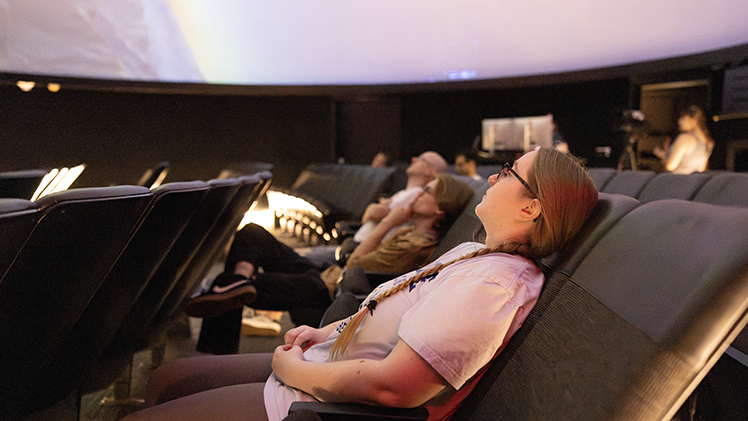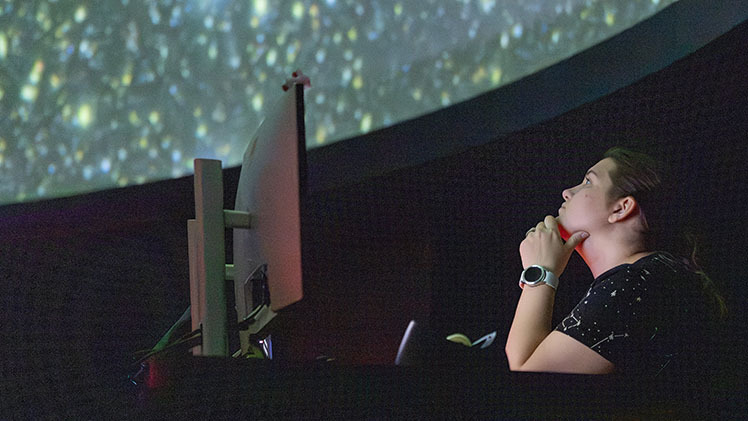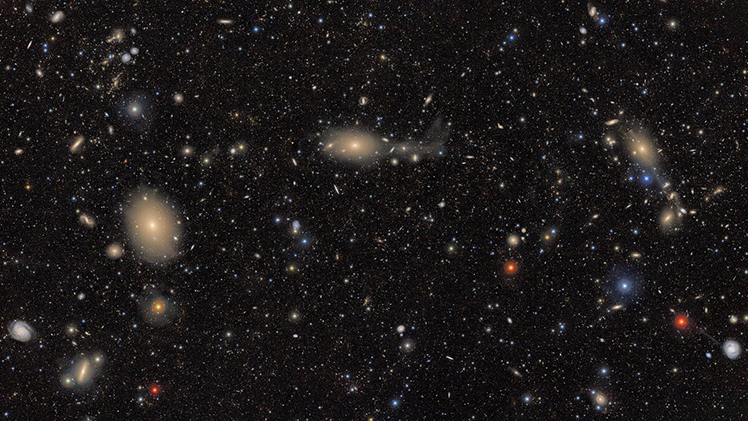A new era in astronomy opened on Monday, June 23, with the release of the first images from NSF–DOE Vera C. Rubin Observatory in Chile.
The University of Toledo’s Ritter Planetarium joined more than 350 planetariums, schools, libraries and amateur astronomy societies around the world in celebrating with a Rubin First Look Watch Party.

Libby Banks, a graduate student in the Department of Physics and Astronomy, watches a livestream event revealing the first images from the NSF–DOE Vera C. Rubin Observatory.
The event, featuring a livestream from the National Academy of Sciences Building in Washington, D.C., offered local stargazers a chance to explore unprecedented imagery captured by the largest camera ever built.
Funded by the U.S. National Science Foundation and U.S. Department of Energy’s Office of Science, the Rubin Observatory is a first-of-its kind telescope designed to repeatedly scan the sky for 10 years with a 3,200-megapixel camera, creating an ultra-wide, ultra-high-definition, time-lapse record of our universe called the Legacy Survey of Space and Time (LSST).
Its first publicly released images speak to its unprecedented scale: In just over 10 hours of test observations, the Rubin Observatory has already captured millions of galaxies and thousands of asteroids.
“The Rubin Observatory will provide astronomers with a treasure trove of information and this is just a sneak peek of what it can show us,” said Heidi Westrick, assistant director of Ritter Planetarium. “I’m excited to see what we’ll discover.”

Heidi Westrick, assistant director of Ritter Planetarium, checks out one of the first images from the NSF–DOE Vera C. Rubin Observatory during a Rubin First Look Watch Party at Ritter Planetarium.

The NSF–DOE Vera C. Rubin Observatory reveals in unprecedented detail the southern region of the Virgo Cluster, about 55 million light-years away from Earth and the nearest large collection of galaxies to our own Milky Way. Photo credit: RubinObs/NOIRLab/SLAC/NSF/DOE/AURA.